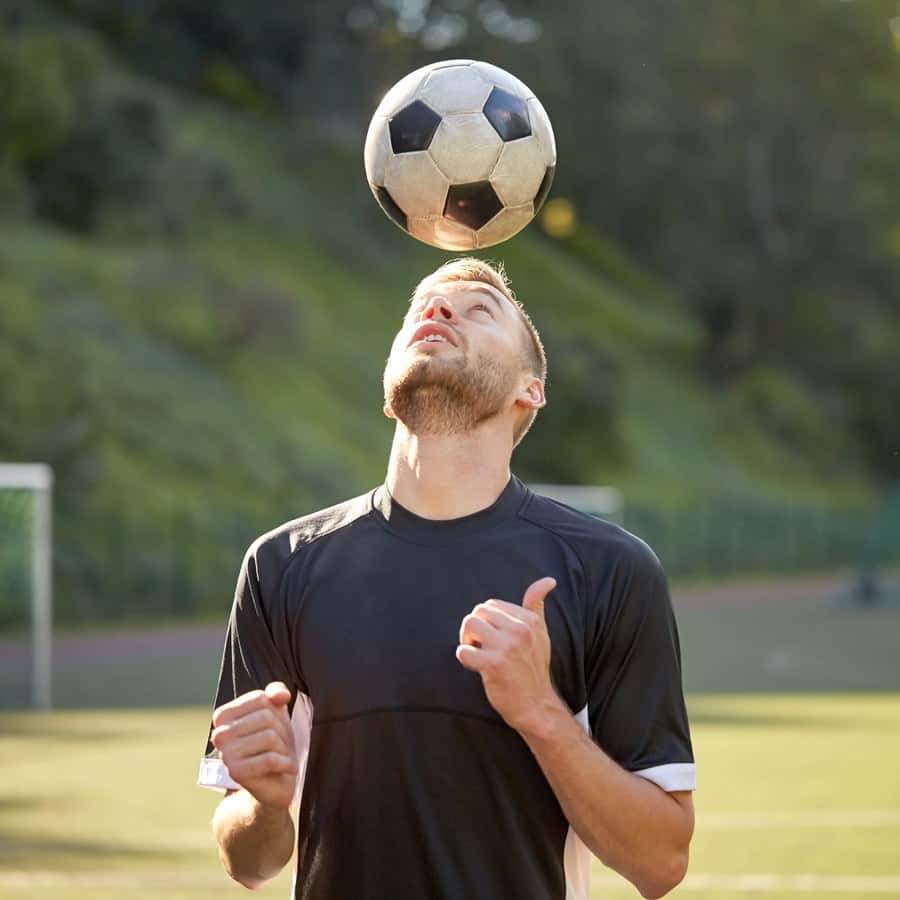
I attended a small public high school. My graduating class had under 40 kids. Clearly, we could not muster a competitive football team with such a paltry number of students. Instead, we played soccer. I wasn’t good enough to make the team, but most of my friends played. And I did get to play soccer during gym class. Heading the ball was not my forte. That may be a good thing given what we are learning about soccer and brain damage.
Does Heading the Ball Affect the Brain?
People who play contact sports may suffer the consequences later in life. American football players have brought the issue of chronic traumatic encephalopathy (CTE) from repeated head trauma to public attention.
Football is a rough sport. Players routinely get banged up. Concussions were taken for granted, even when players had the latest and greatest helmets. Many people assume that soccer is far less traumatic to the brain. After all, players do not intentionally try to bang heads. That thinking may need to change.
Scottish researchers examined the records of 7,676 professional soccer players. While these men were less likely than nonathletes to die of heart disease or lung cancer, they were more likely to suffer neurodegenerative disease (New England Journal of Medicine, Nov. 7, 2019). In other words, there was a link between soccer and brain damage.
The authors conclude:
“In summary, our data show that mortality from neurodegenerative disease was higher and prescriptions of dementia-related medications were more common among former professional soccer players than among controls from the Scottish population.”
Why Soccer and Brain Damage?
An accompanying editorial in The New England Journal of Medicine titled “Soccer and Mortality – Good News and Bad News” suggests that routine heading of the ball could be the link between soccer and brain damage.
The author notes:
“Professional soccer players do not share the body habitus of American football players, but they do share the exposure to repetitive head impacts through routine heading of the ball. An average player heads the ball 6 to 12 times per game (in addition to heading drills at practice) and thousands of times during a career. In small case-series studies, heading has been associated with altered cerebral neurochemistry,9 diminished white-matter integrity, and cortical thinning in professional soccer players without obvious concussion.”
The editorial in the New England Journal of Medicine (Nov. 7, 2019) is careful not to generalize the findings from professional soccer to amateur or college-level soccer. And the editorialist tries to reassure parents that children who head the ball are not destined to experience cognitive decline as adults. On the other hand, we do not know what the impact of heading is on the developing brain. The conclusion is not reassuring:
“The article by Mackay and colleagues adds to the evidence that repetitive head impacts in some contact and collision sports may increase the risk of neurodegenerative disease and dementia.”
Other Research Linking Soccer and Brain Damage:
This study in the New England Journal of Medicine is not the only research suggesting an association between heading a soccer ball and brain damage. Here are a couple of articles we have written about in the past:
Heading Soccer Ball May Batter Brain
It’s not just professional soccer players who may be at risk. Even amateur players may be susceptible:
Soccer Players Putting Their Brains in Danger
Share your own thoughts about soccer in the comment section below.
Citations
- Stem, R. A., "Soccer and Mortality - Good News and Bad News," New England Journal of Medicine, Nov. 7, 2019, doi: 10.1056/NEJMe1912071
- Mackay, D. F., et al, "Neurodegenerative Disease Mortality among Former Professional Soccer Players," New England Journal of Medicine, Nov. 7, 2019, doi: 10.1056/NEJMoa1908483

